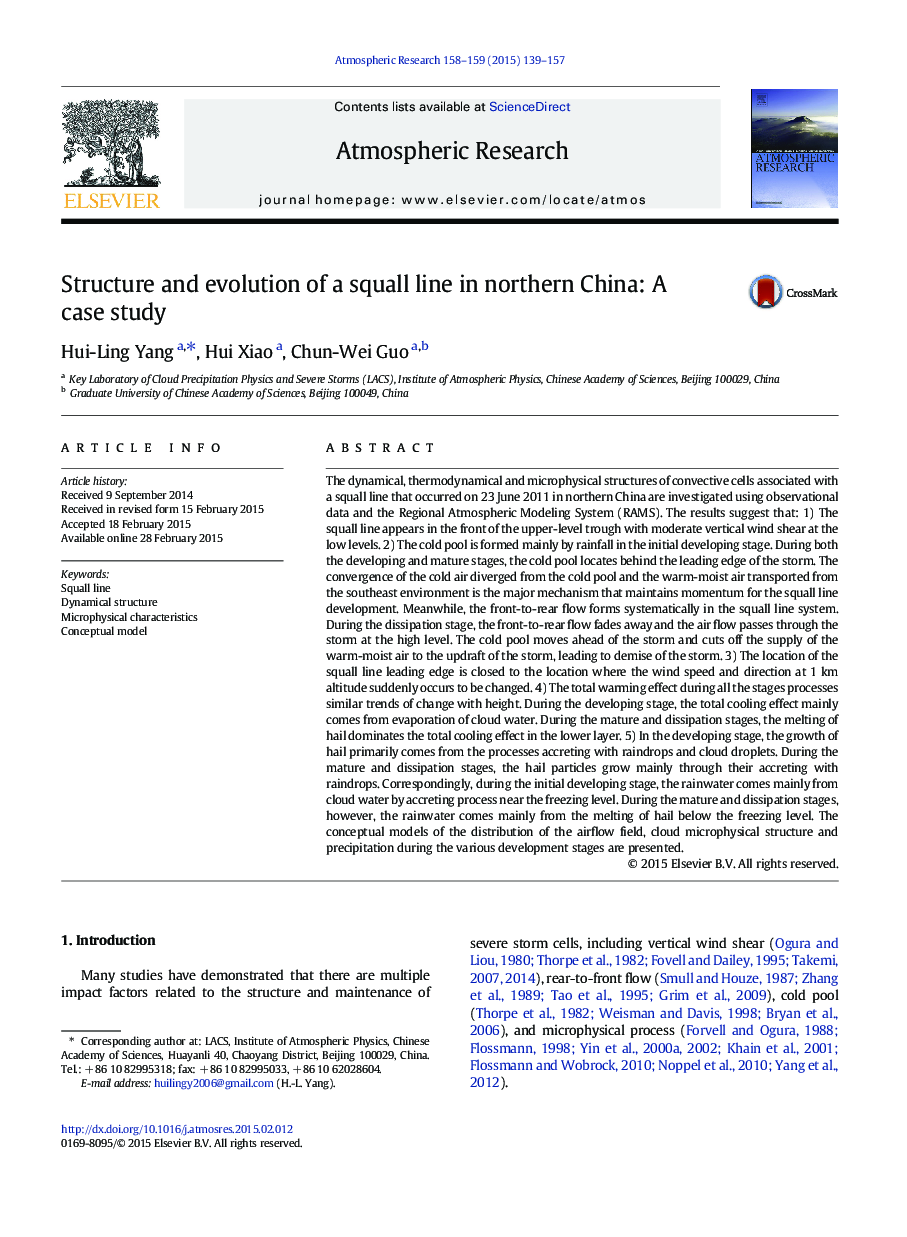| کد مقاله | کد نشریه | سال انتشار | مقاله انگلیسی | نسخه تمام متن |
|---|---|---|---|---|
| 6343298 | 1620515 | 2015 | 19 صفحه PDF | دانلود رایگان |
عنوان انگلیسی مقاله ISI
Structure and evolution of a squall line in northern China: A case study
ترجمه فارسی عنوان
ساختار و تکامل یک خط مقدم در شمال چین: مطالعه موردی
دانلود مقاله + سفارش ترجمه
دانلود مقاله ISI انگلیسی
رایگان برای ایرانیان
موضوعات مرتبط
مهندسی و علوم پایه
علوم زمین و سیارات
علم هواشناسی
چکیده انگلیسی
The dynamical, thermodynamical and microphysical structures of convective cells associated with a squall line that occurred on 23 June 2011 in northern China are investigated using observational data and the Regional Atmospheric Modeling System (RAMS). The results suggest that: 1) The squall line appears in the front of the upper-level trough with moderate vertical wind shear at the low levels. 2) The cold pool is formed mainly by rainfall in the initial developing stage. During both the developing and mature stages, the cold pool locates behind the leading edge of the storm. The convergence of the cold air diverged from the cold pool and the warm-moist air transported from the southeast environment is the major mechanism that maintains momentum for the squall line development. Meanwhile, the front-to-rear flow forms systematically in the squall line system. During the dissipation stage, the front-to-rear flow fades away and the air flow passes through the storm at the high level. The cold pool moves ahead of the storm and cuts off the supply of the warm-moist air to the updraft of the storm, leading to demise of the storm. 3) The location of the squall line leading edge is closed to the location where the wind speed and direction at 1Â km altitude suddenly occurs to be changed. 4) The total warming effect during all the stages processes similar trends of change with height. During the developing stage, the total cooling effect mainly comes from evaporation of cloud water. During the mature and dissipation stages, the melting of hail dominates the total cooling effect in the lower layer. 5) In the developing stage, the growth of hail primarily comes from the processes accreting with raindrops and cloud droplets. During the mature and dissipation stages, the hail particles grow mainly through their accreting with raindrops. Correspondingly, during the initial developing stage, the rainwater comes mainly from cloud water by accreting process near the freezing level. During the mature and dissipation stages, however, the rainwater comes mainly from the melting of hail below the freezing level. The conceptual models of the distribution of the airflow field, cloud microphysical structure and precipitation during the various development stages are presented.
ناشر
Database: Elsevier - ScienceDirect (ساینس دایرکت)
Journal: Atmospheric Research - Volumes 158â159, 1â15 May 2015, Pages 139-157
Journal: Atmospheric Research - Volumes 158â159, 1â15 May 2015, Pages 139-157
نویسندگان
Hui-Ling Yang, Hui Xiao, Chun-Wei Guo,
